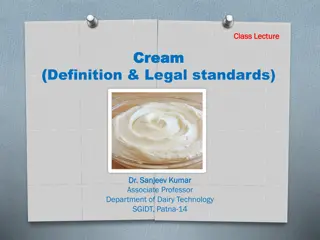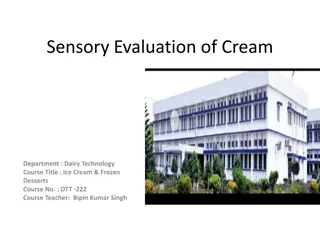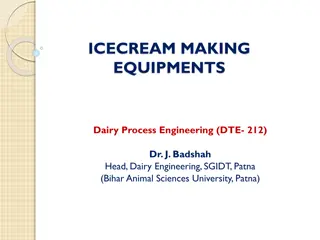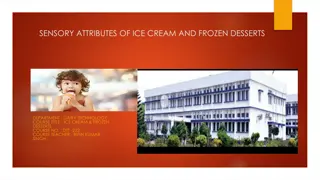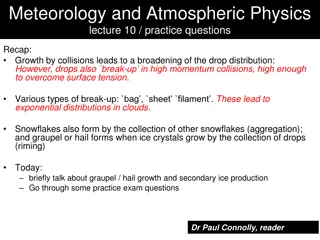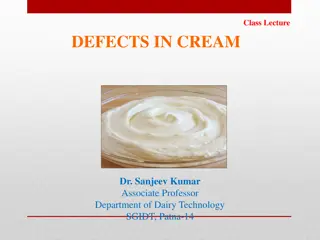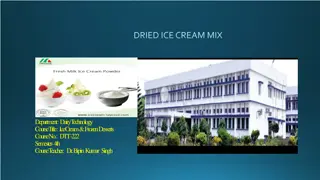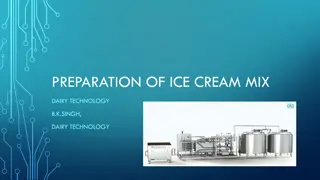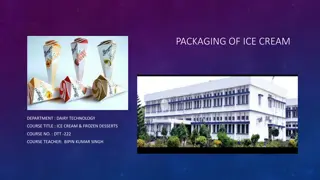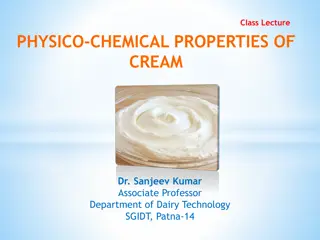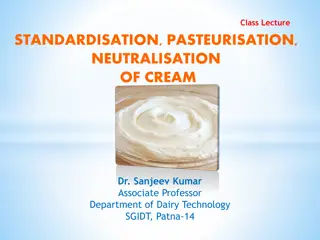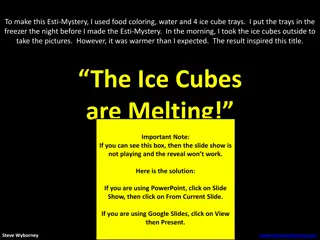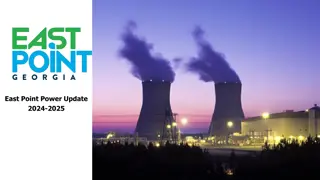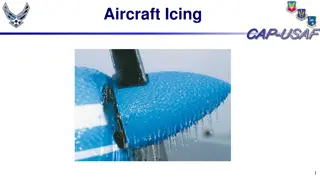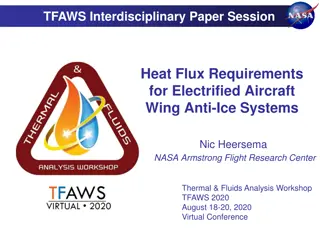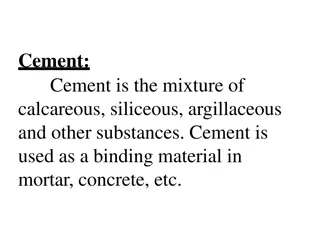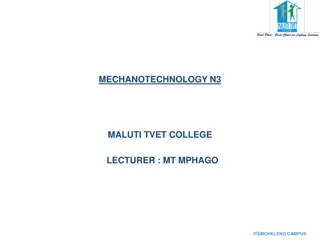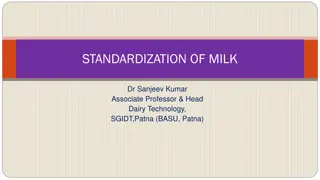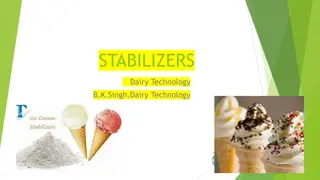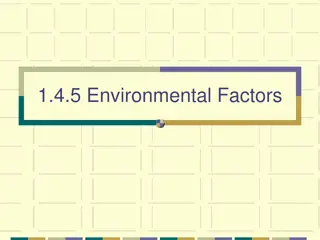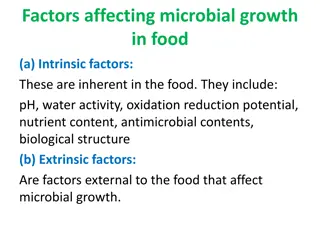Ice Cream Hardening Process: Techniques and Factors
Ice cream hardening is a crucial step in the production process to ensure a consistent texture and prevent ice crystal formation. This process involves lowering the temperature of the ice cream rapidly to a specific level and then storing it at a uniformly low temperature to maintain its quality. Factors such as the temperature of the blast freezer, air circulation, composition of the ice cream, and packaging methods play a significant role in determining the rate and success of the hardening process.
Download Presentation

Please find below an Image/Link to download the presentation.
The content on the website is provided AS IS for your information and personal use only. It may not be sold, licensed, or shared on other websites without obtaining consent from the author. Download presentation by click this link. If you encounter any issues during the download, it is possible that the publisher has removed the file from their server.
E N D
Presentation Transcript
Hardening of Ice Cream Mix B.K.Singh, Dairy Technology
Ice Cream Hardening In hardening process, the aim is to reduce the temperature of the product to at least -18 C in the center of the package as quickly as possible. After the ice cream reaches this point, it is only necessary to store it at a uniformly low temperature to prevent ice melting and recrystallization. This process consists of storing ice cream in a blast freezer in order to lower its temperature even further (to -18/- 20 C) without stirring it. All water in ice cream is not frozen after the final churning process in ice cream machine (at a temperature of -7/-8 C only 50% of the water has turned into ice), so it needs to bring the temperature of ice cream down to -14 C for storage in a display counter or even down to -18 C if want to store it in a freezer.
Objectives of Hardening ice cream The physical nature of ice cream when drawn from the freezer is such that it is seldom practicable to market it in this form. To freeze more water in the ice cream that has been drawn from the freezer and filled in the container to obtain better consistency to make ice cream stiff enough to hold its shape
Hardening process After ice cream is drawn from the freezer, it is put into containers to be placed in hardening room. Here the freezing process is continued without agitation until the temperature of ice cream reaches -18 C or lower, preferably -26.1 C (-15 F ). Quick hardening is desirable, since slow hardening favours formation of large ice crystals and a corresponding coarseness of texture.
Factors that affect the rate of hardening Temperature of blast freezer - the colder the temperature, the faster the hardening, the smoother the product. Rapid circulation of air - increases convective heat transfer. Temperature of ice cream when placed in the hardening freezer - the colder the ice cream at draw, the faster the hardening; - must get through packaging operations fast. Size of container - exposure of maximum surface area to cold air, especially important to consider shrink wrapped bundles - they become a much larger mass to freeze. Bundling should be done after hardening.
Factors that affect the rate of hardening Composition of ice cream - related to freezing point depression and the temperature required to ensure a significantly high ice phase volume. Method of stacking containers or bundles to allow air circulation. Circulation should not be impeded - there should be no 'dead air' spaces (e.g., round vs. square packages). Care of evaporator - freedom from frost - acts as insulator. Package type, should not impede heat transfer - e.g., styrofoam liner or corrugated cardboard may protect against heat shock after hardening, but reduces heat transfer during freezing so not feasible.
Hardening room & hardeners Room: Still air type hardening room Gravity air type hardening room Forced air type hardening room Hardeners: Plate / Contact hardeners Blast tunnel hardeners Hardening cabinet
Hardening tunnels Some manufacturers of larger volumes use hardening tunnels that produce an air blast at -34.4 to 45.5 C for fast hardening. This may or may not contain a conveyor belt and the advantage comes when hardening smaller packages, which can be hardened in about 1 h.
Hardening cabinet Commercial ice cream hardening cabinets are designed to quickly chill, solidify and store your freshly made ice cream. Ice cream parlors, but particularly creameries require at least one ice cream hardening cabinet for their industrial-sized containers of frozen treats.
Contact Plate Hardeners Plate freezers consist of a series of parallel flat plates through which a coolant is circulated. The plates can be mounted either horizontally or vertically. A hydraulic system is used to both open the space between plates for loading and unloading, and to close the plates so that effective contact with the food product occurs during freezing. Spacers or limit stops between plates and a pressure relief valve in the hydraulic circuit can be used to prevent the product being crushed unevenly or excessively flattened during plate closure.
Plate Hardeners The major advantages of plate freezers are that: The rate of freezing is high even for packaged products; The product has very consistent size and shape and can be easily bulk stacked with high packing density and stability for subsequent transportation; They are very compact; Infrequent defrosting of the plates is required; The total heat load and energy use are lower than for air systems (no fans and less infiltration and air interchange loads); If evaporating refrigerant is used directly in the plates, the refrigeration system can operate at a higher suction temperature. The major disadvantages of plate freezers are the high capital cost, especially if they are automated to run continuously, and the limitation on product types that can be handled.
Cryogenic Hardening The most commonly used cryogens are liquid nitrogen (LN2) and liquid carbon dioxide (LCO2). Chlorofluorocarbons (CFCs) such as CFC-12 are no longer in use due to their ozone layer depletion effect. The cryogens have low boiling points, 196 C for LN2and 79 C for LCO, giving large temperature differences and high rates of heat transfer. Other important properties of such cryogens are that they are colorless, odorless, chemically concentrations. Therefore they are safe for direct contact with food. The product is either sprayed with, or immersed in, the cryogen at atmospheric pressure. Special CO2because it forms a low density snow. Cryogenic freezers can operate continuously with the product being conveyed through a tunnel inert, and nontoxic in normal care must be exercised with
Cryogenic Hardening The main advantages of cryogenic freezers are: high rates of freezing achieved by the very cold temperatures and low refrigerant-to-product surface heat transfer resistance (resulting in lower weight loss and higher quality); ease of operation; compact size; low cost of the equipment; rapid installation and start-up; mechanical simplicity; and low maintenance cost. The main disadvantage is the high cost of the cryogens. Cryogenic freezing (or alternatively liquid immersion freezing) can be used for rapidcrust freezing with completion of freezing in an air-blast freezer (often called combined cryomechanical systems).
Nitrogen Refrigerated Hardening Tunnels LNF is compact, comprises almost no moving parts and is very easy to maintain and clean. It s clean-in-place (CIP)-compatible but can also be disassembled and sanitized. Main components of the LNF include the following: Liquid feed arrangement to feed the liquid droplets into the pelletizer through feed tubes Pelletizer tank with a conical outlet to freeze the pellets in liquid nitrogen at 196 C Motorized agitator to ensure that the liquid nitrogen is constantly moving to prevent agglomeration Liquid nitrogen supply valve and control Screw conveyor to remove the frozen pellets from the pelletizer tank Ventilation system to prevent nitrogen gas escaping into the production room.
LNF Key benefits include: Very quick freezing Minimal product loss Simple and reliable operation Easy to clean Free flowing product.


